- Joined
- Jan 6, 2013
- Messages
- 5,646
- Reaction score
- 11,333
1. The History
On the edge of Liverpool’s Baltic Triangle, Heap's Rice Mill was founded by Joseph Heap as Joseph Heap & Sons Ltd in 1778. Initially, just a rice mill, warehouses were added and then combined into a single building. Its claim to fame is that the rice in Kellogg's Rice Krispies was once ground at Heap's. The massive seven-storey mill is predominantly constructed in red-brick, a slate roof and a frame of timber and cast iron.
Until about the 1880s, Heap & Sons owned their own ships which were known as the Diamond H Line. They sailed between Liverpool and Australia, via Rangoon and the East Indies. The firm was operational until 1988 when it transferred to a new site in Regent Road. Heap’s Mill was still partially operational right up until 2005. It was then vacated and left empty and was due to be demolished until it was Grade II listed in 2014. English Heritage stated that the mill was “a good example of an early and mid-C19 warehouse complex adapted in the late-C19 for a single unified use as a rice processing and storage site”.
There were plans afoot in 2014 to convert the building into luxury apartments as part of a £130m residential development. Writing in the Architects' Journal Gill Darley, described the plans as "façadism" as the developers had wanted to pull out of the redevelopment if they were forced to keep the original interior. Hence in 2015 the site was sold on to Inhabit who disclosed that a planning agreement had been reached and that the work to convert the building into luxury apartments was to be started. However, Elliot Lawless' Elliot Group bought it back in July 2019, but no work has yet started.
The mill pictured back in 1980:
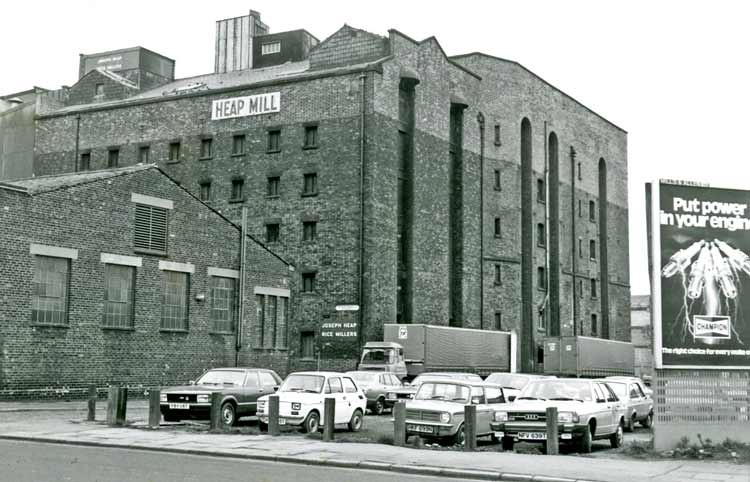 Heap-Mill-1980 by HughieDW, on Flickr
Heap-Mill-1980 by HughieDW, on Flickr
2. The Explore
So, after two mornings of relative exploring failure exploring in Liverpool on morning 3, my first target turns out to have live secca on it, so I move onto an alternative place. The place is a complete death trap and my caution slowed me down somewhat. When it came to the “Bridge of Death” I’d reached my comfort zone. It was also really hard to photograph due to the close-to-darkness light situation and sketchy floor. All-in-all though, a very interesting explore, even if my pictures didn’t really do the place justice.
3. The Pictures
A few externals first:
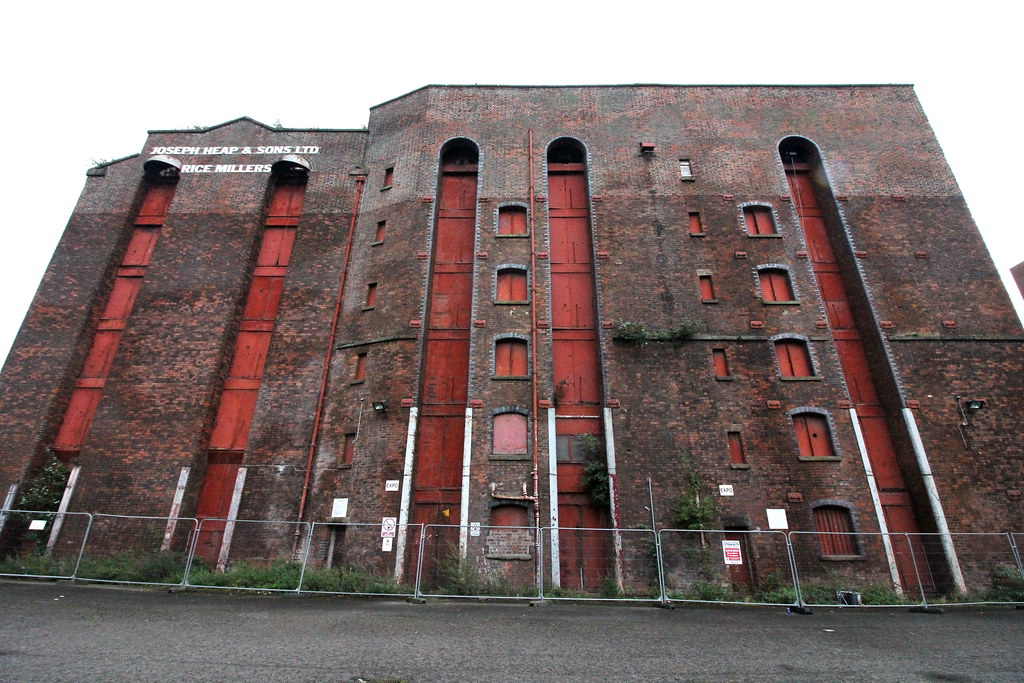 img8556 by HughieDW, on Flickr
img8556 by HughieDW, on Flickr
 img8560 by HughieDW, on Flickr
img8560 by HughieDW, on Flickr
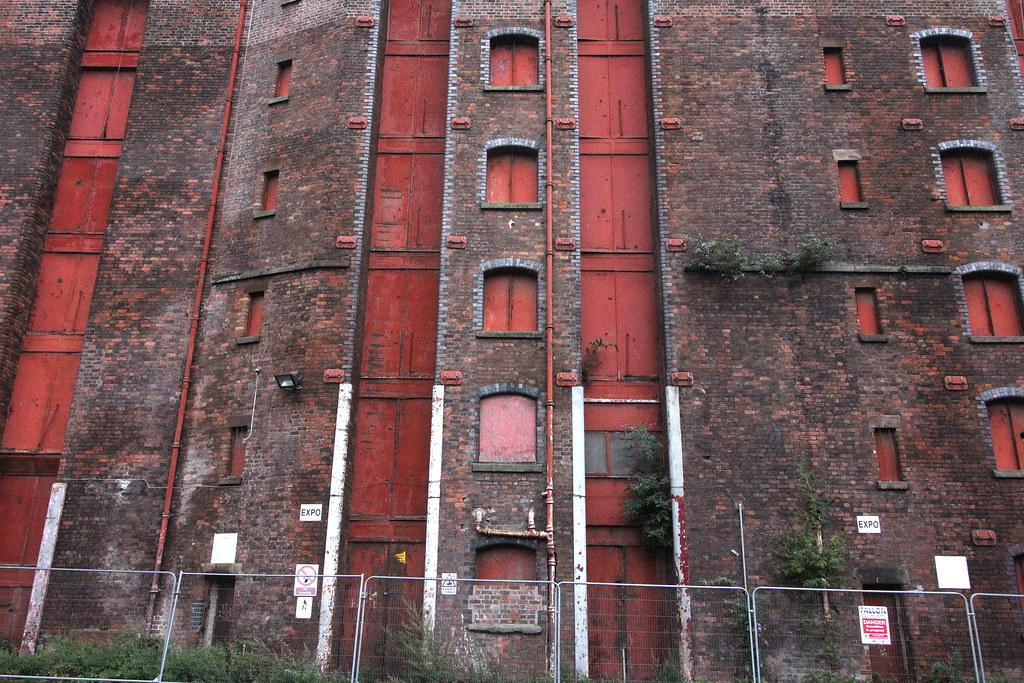 img8557 by HughieDW, on Flickr
img8557 by HughieDW, on Flickr
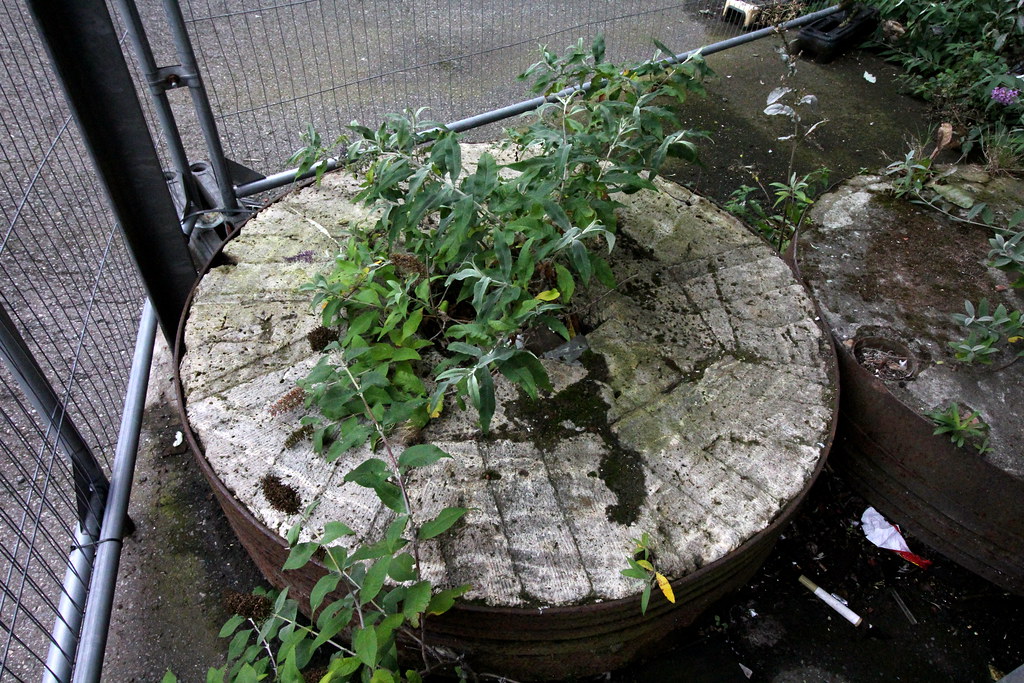 img8555 by HughieDW, on Flickr
img8555 by HughieDW, on Flickr
And we’re in:
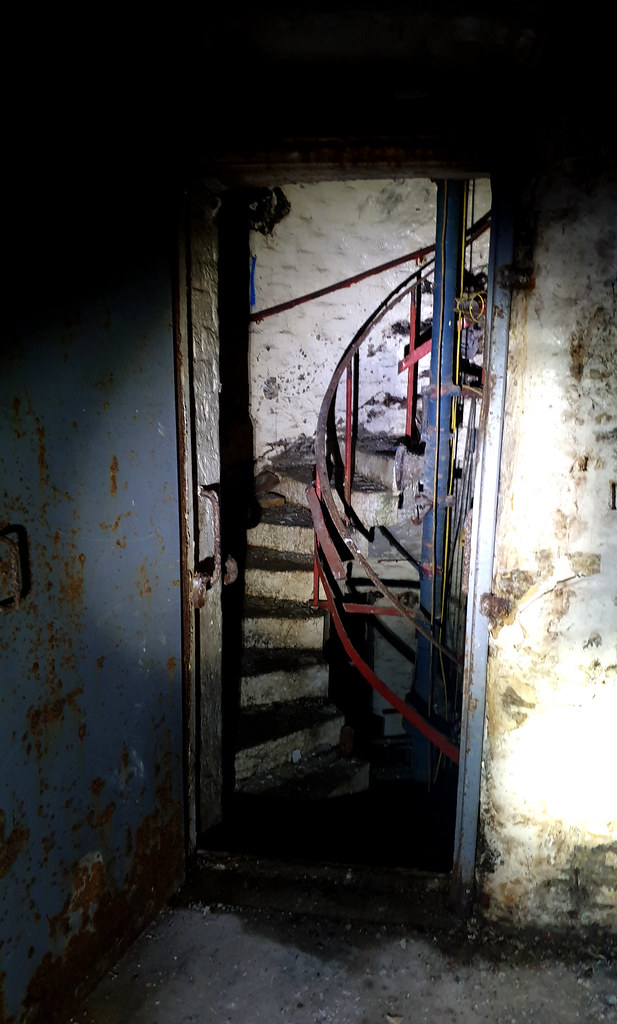 Rice Liverpool 01 by HughieDW, on Flickr
Rice Liverpool 01 by HughieDW, on Flickr
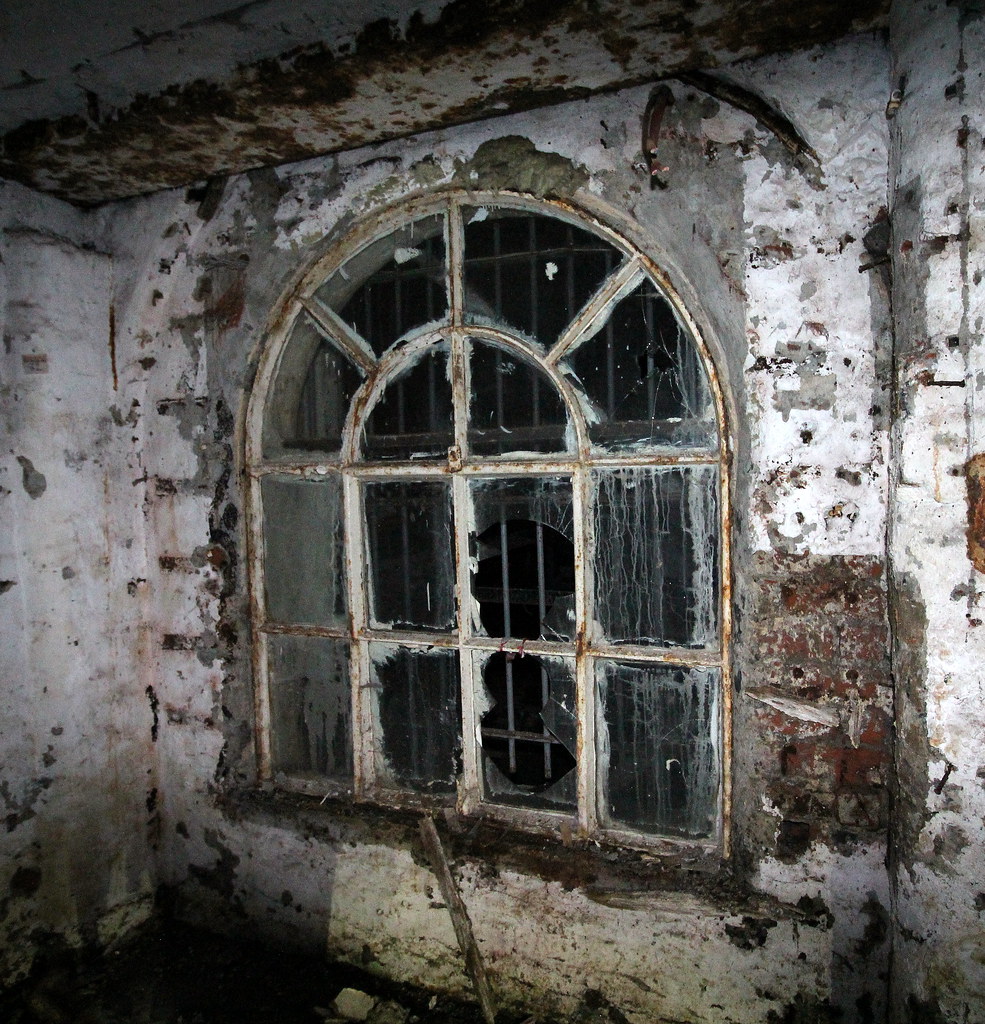 img8547 by HughieDW, on Flickr
img8547 by HughieDW, on Flickr
A pair of two large hoppers between the two buildings:
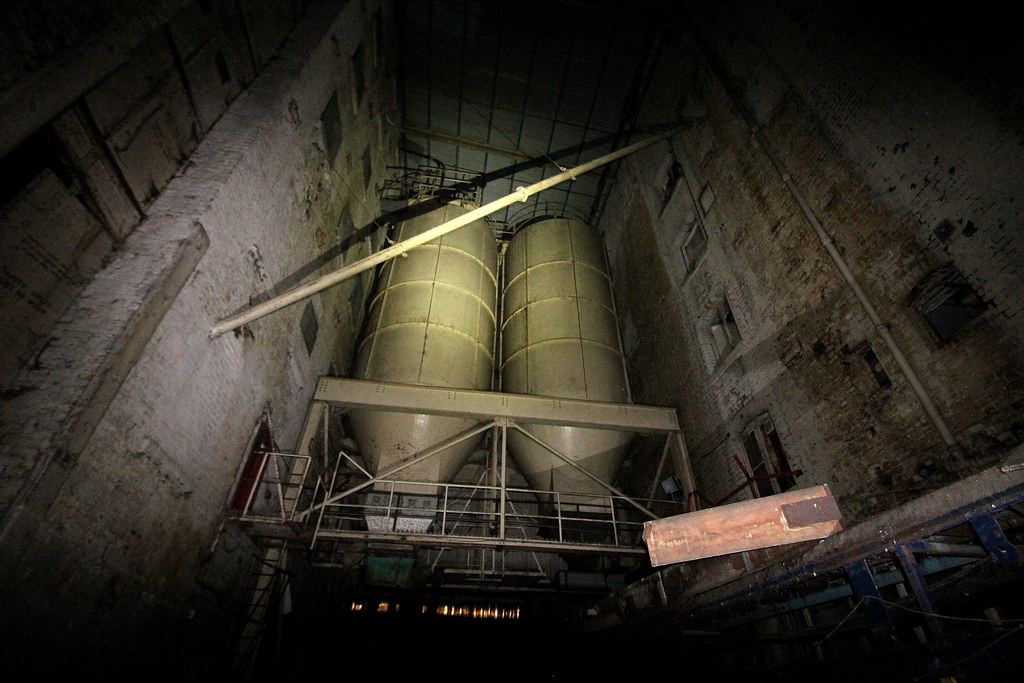 img8553 by HughieDW, on Flickr
img8553 by HughieDW, on Flickr
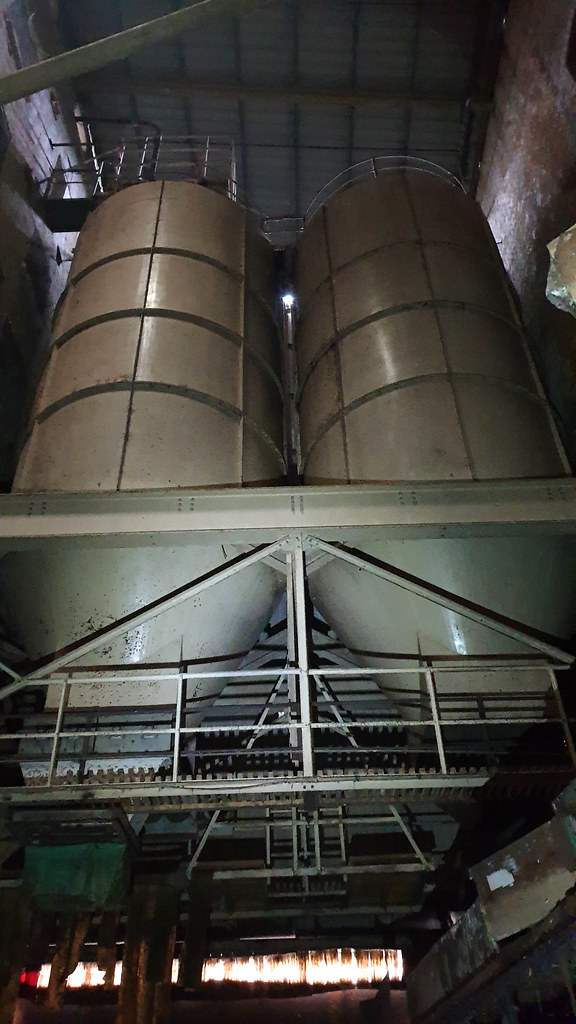 Rice Liverpool 02 by HughieDW, on Flickr
Rice Liverpool 02 by HughieDW, on Flickr
Looking up at a loading bay, originally outdoors, now indoors:
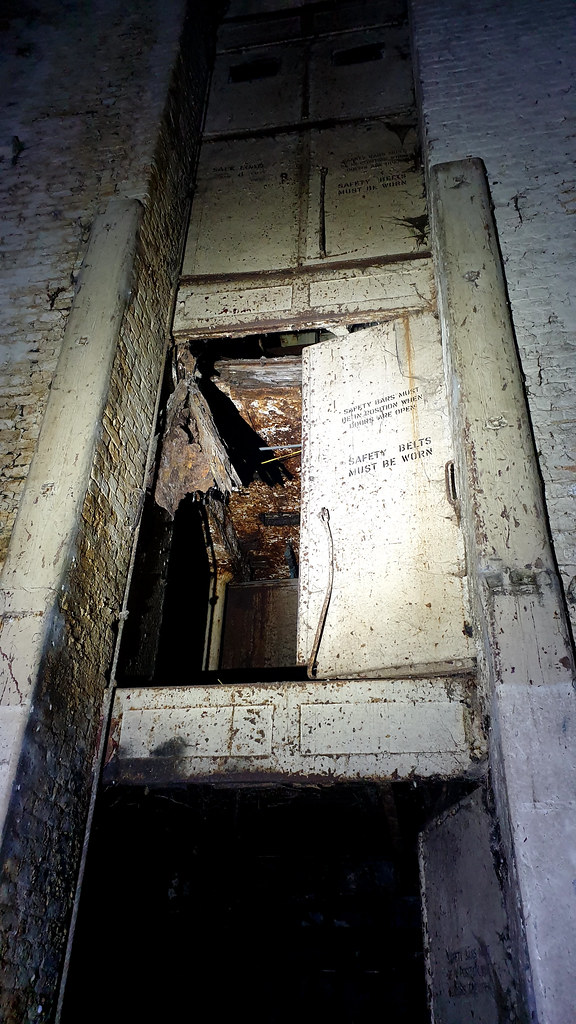 Rice Liverpool 04 by HughieDW, on Flickr
Rice Liverpool 04 by HughieDW, on Flickr
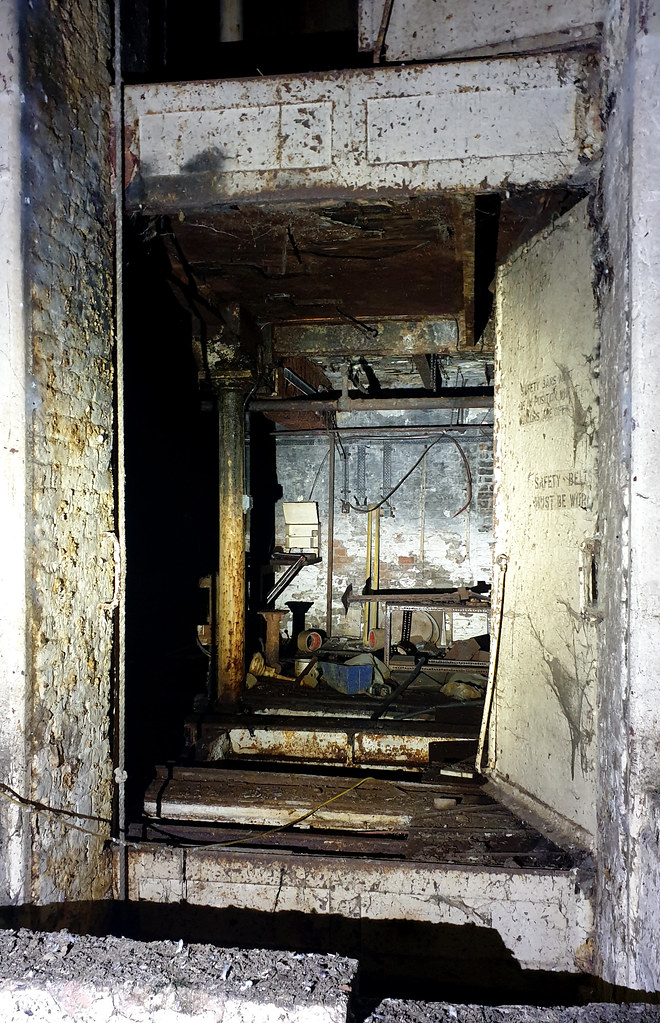 Rice Liverpool 03 by HughieDW, on Flickr
Rice Liverpool 03 by HughieDW, on Flickr
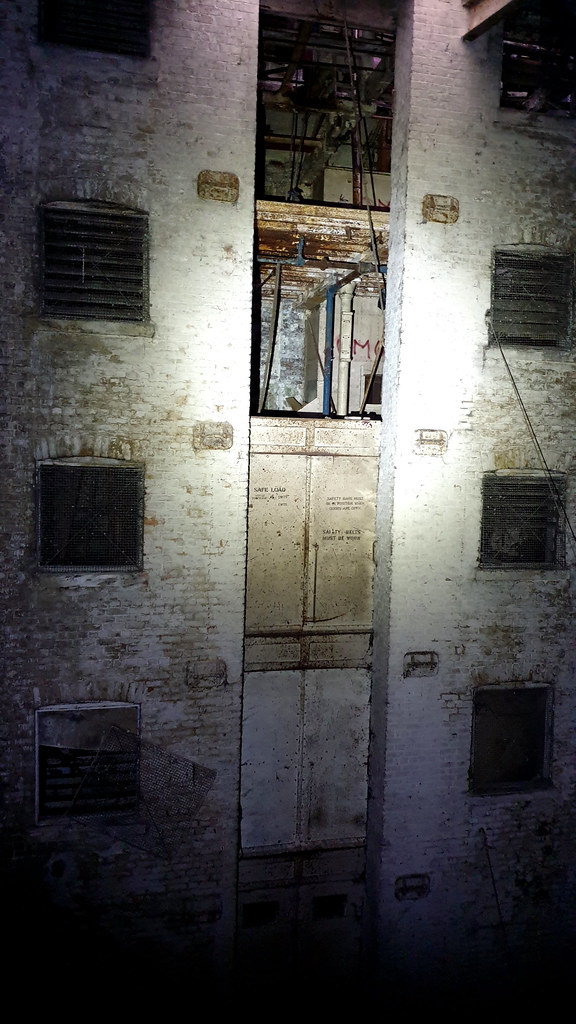 Rice Liverpool 16 by HughieDW, on Flickr
Rice Liverpool 16 by HughieDW, on Flickr
One of the less sketchy floors in B block!
 Rice Liverpool 06 by HughieDW, on Flickr
Rice Liverpool 06 by HughieDW, on Flickr
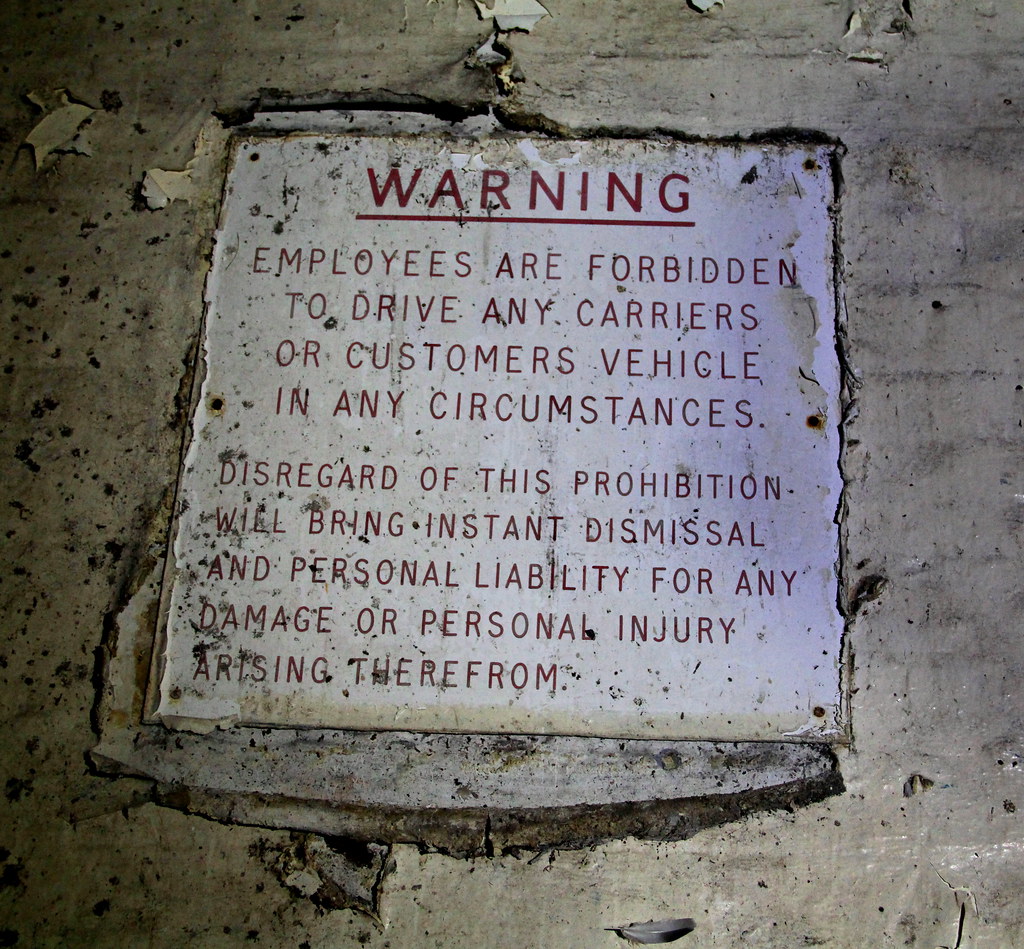 img8499 by HughieDW, on Flickr
img8499 by HughieDW, on Flickr
The circular staircase was at least solid!
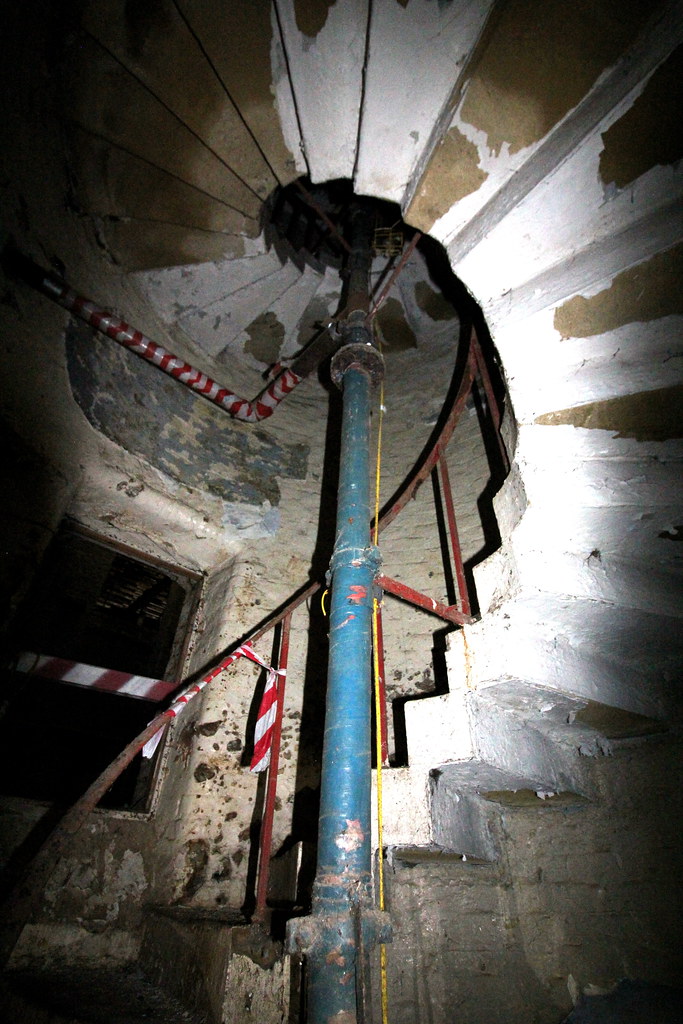 img8541 by HughieDW, on Flickr
img8541 by HughieDW, on Flickr
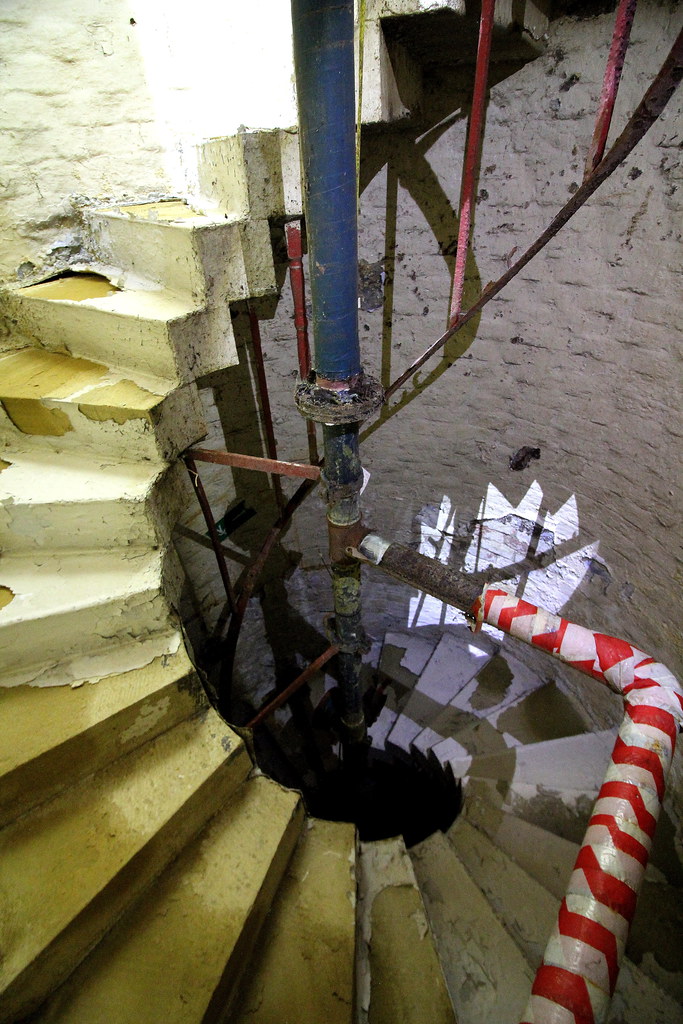 img8537 by HughieDW, on Flickr
img8537 by HughieDW, on Flickr
And up to the attic on the top level:
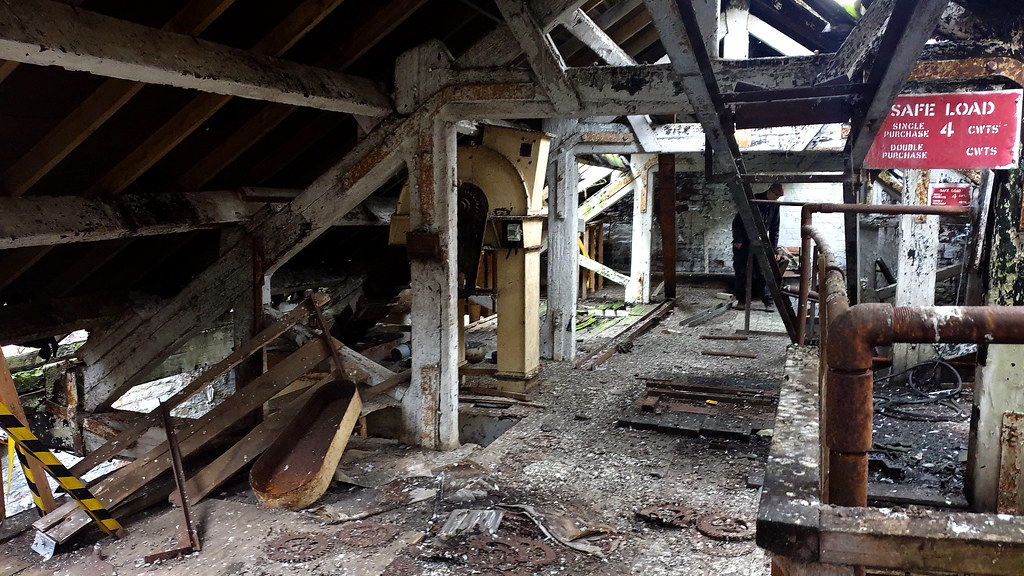 Rice Liverpool 07 by HughieDW, on Flickr
Rice Liverpool 07 by HughieDW, on Flickr
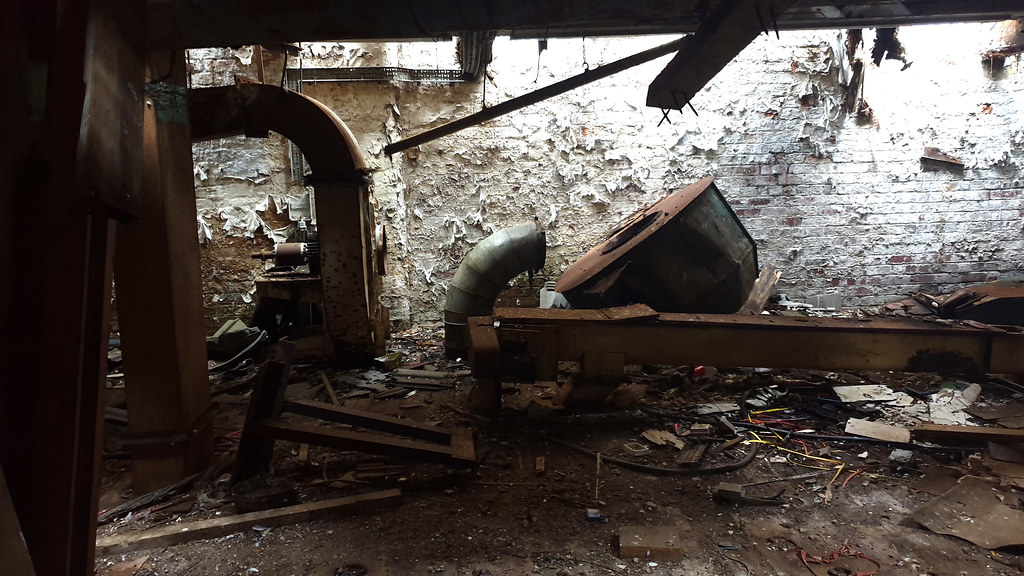 Rice Liverpool 08 by HughieDW, on Flickr
Rice Liverpool 08 by HughieDW, on Flickr
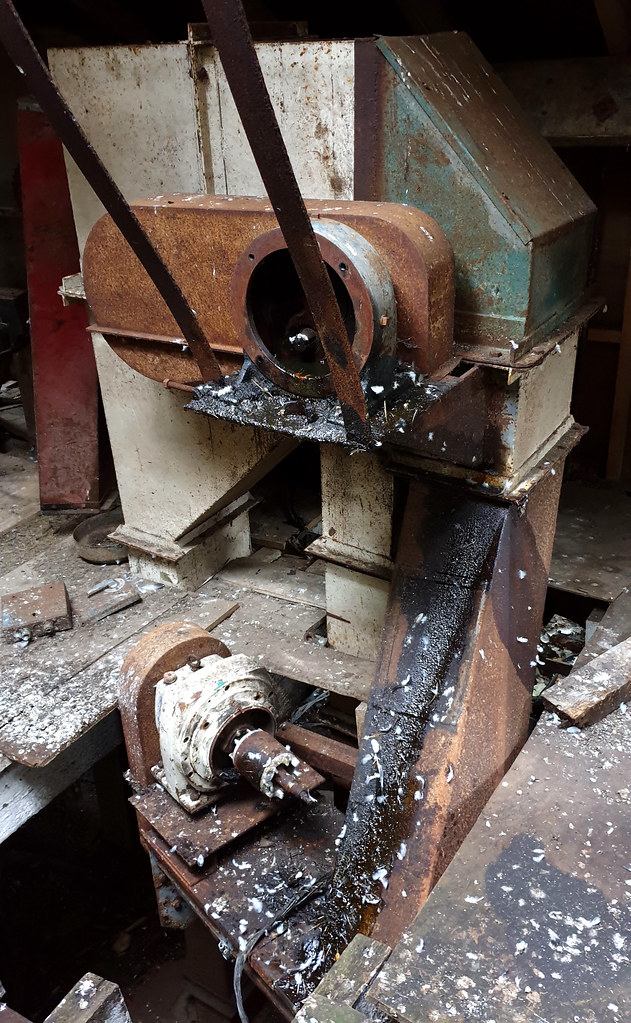 Rice Liverpool 10 by HughieDW, on Flickr
Rice Liverpool 10 by HughieDW, on Flickr
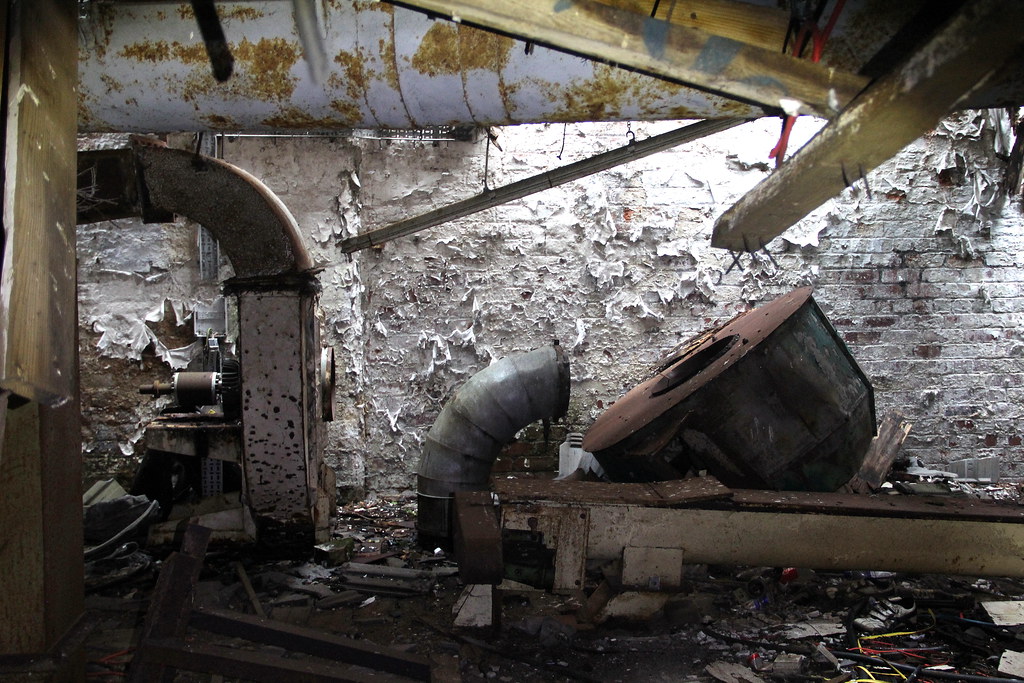 img8517 by HughieDW, on Flickr
img8517 by HughieDW, on Flickr
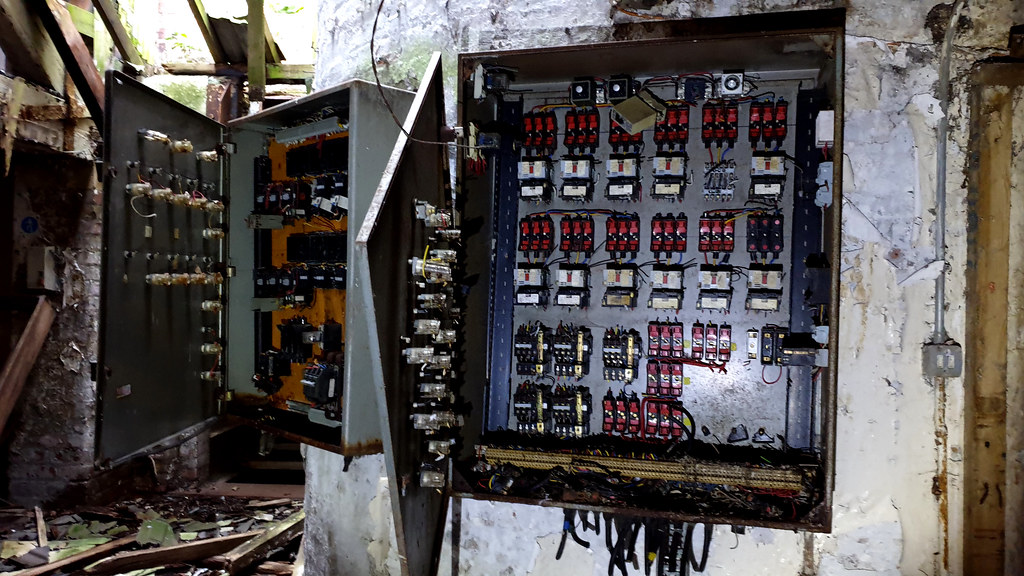 Rice Liverpool 12 by HughieDW, on Flickr
Rice Liverpool 12 by HughieDW, on Flickr
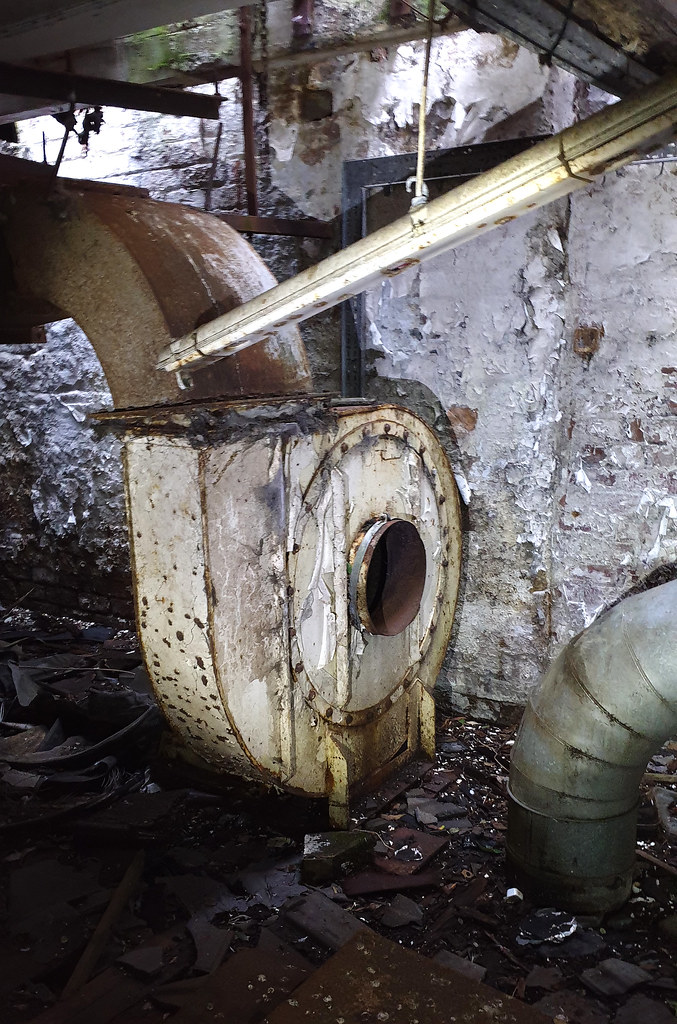 Rice Liverpool 15 by HughieDW, on Flickr
Rice Liverpool 15 by HughieDW, on Flickr
The door from C block to B block flanked by two cyclone-type sentries:
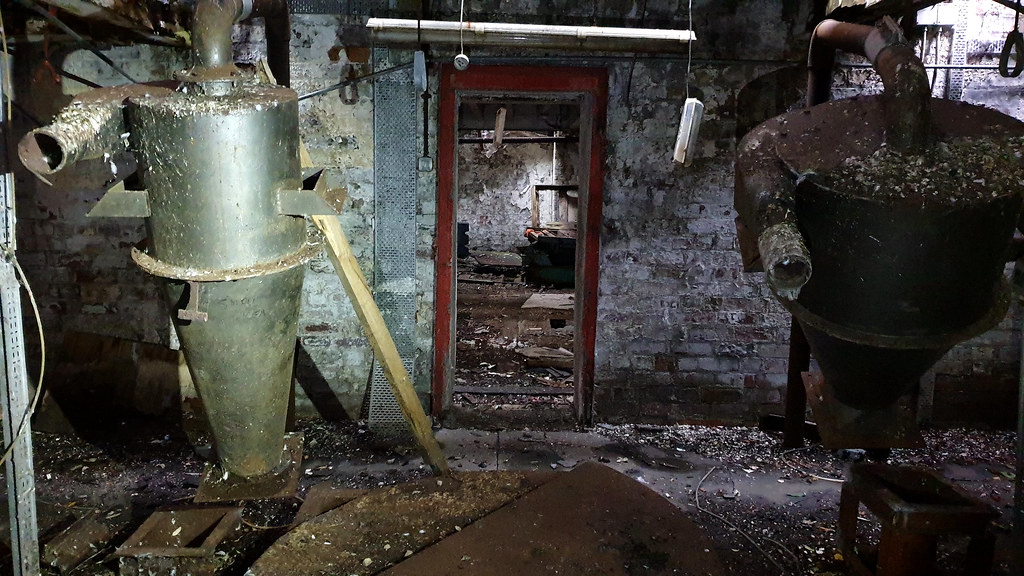 Rice Liverpool 14 by HughieDW, on Flickr
Rice Liverpool 14 by HughieDW, on Flickr
Connecting bridge between block B and C:
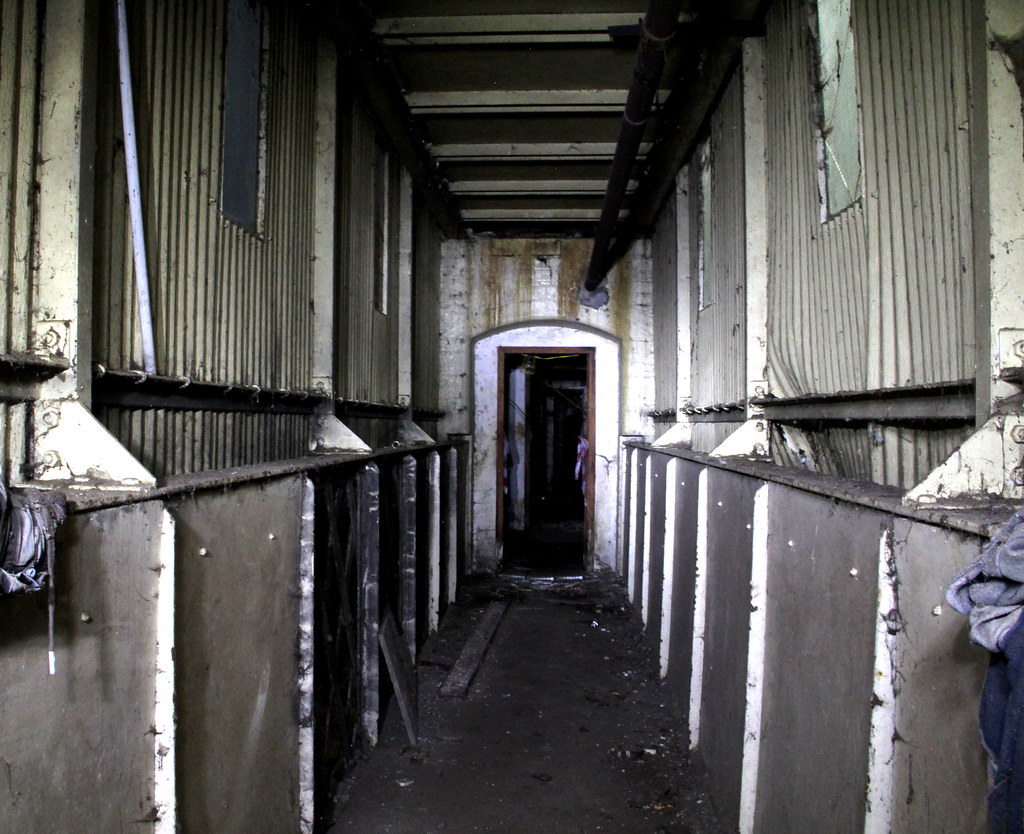 img8528 by HughieDW, on Flickr
img8528 by HughieDW, on Flickr
A large part of C block has no floors at all!
 Rice Liverpool 17 by HughieDW, on Flickr
Rice Liverpool 17 by HughieDW, on Flickr
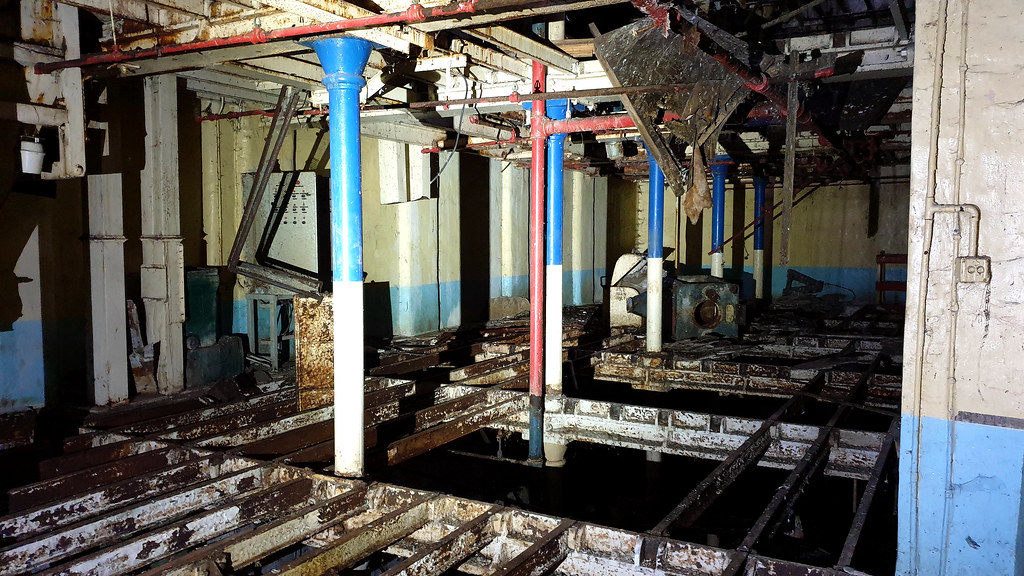 Rice Liverpool 19 by HughieDW, on Flickr
Rice Liverpool 19 by HughieDW, on Flickr
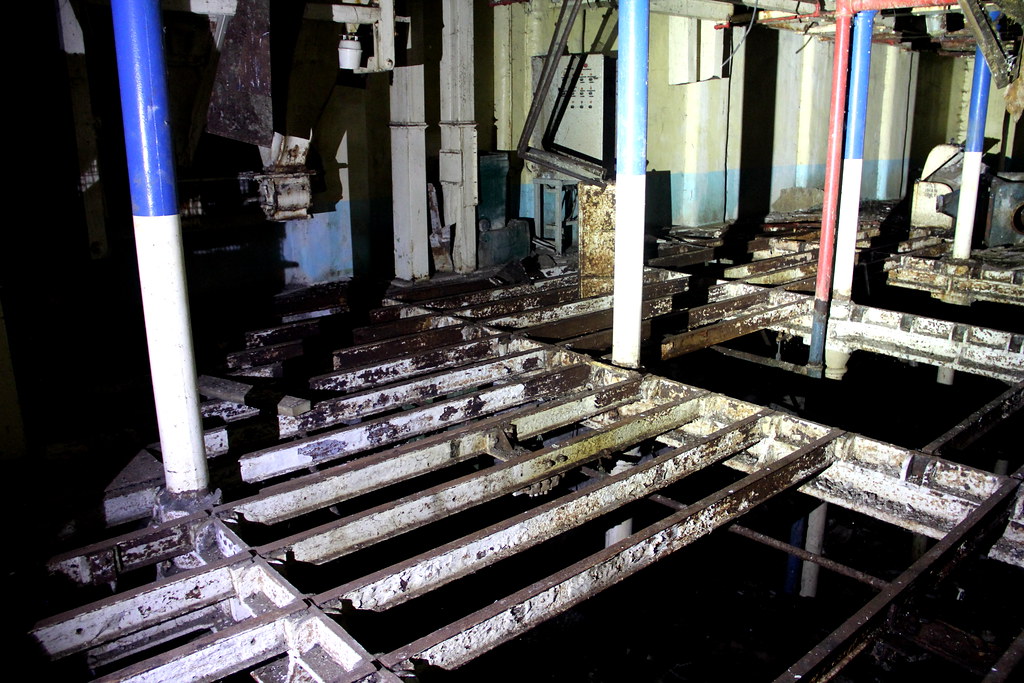 img8532 by HughieDW, on Flickr
img8532 by HughieDW, on Flickr
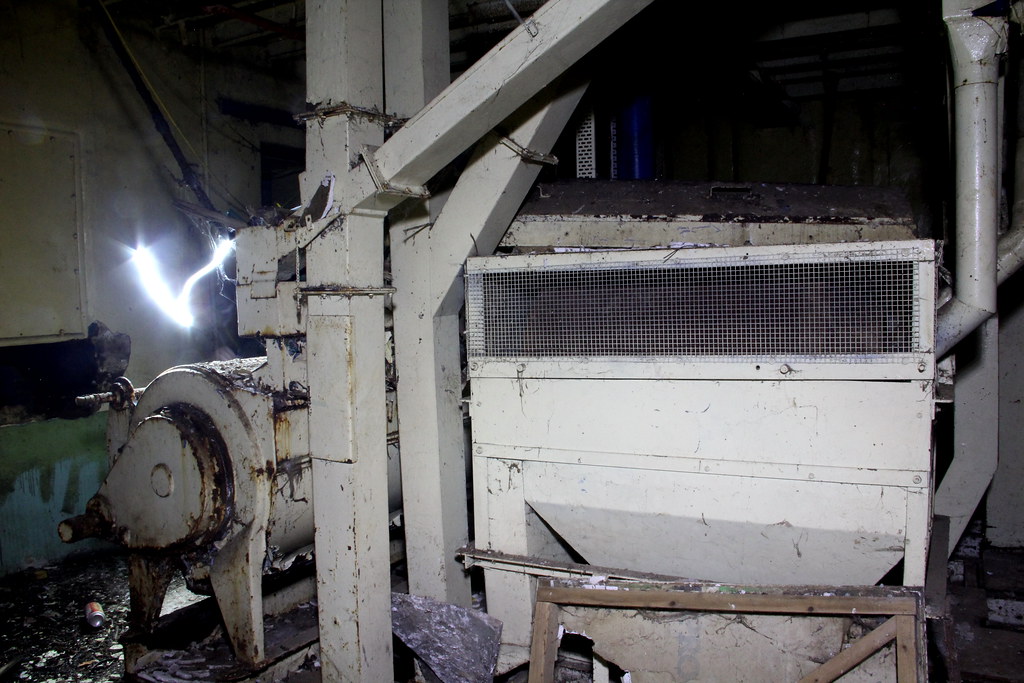 img8527 by HughieDW, on Flickr
img8527 by HughieDW, on Flickr
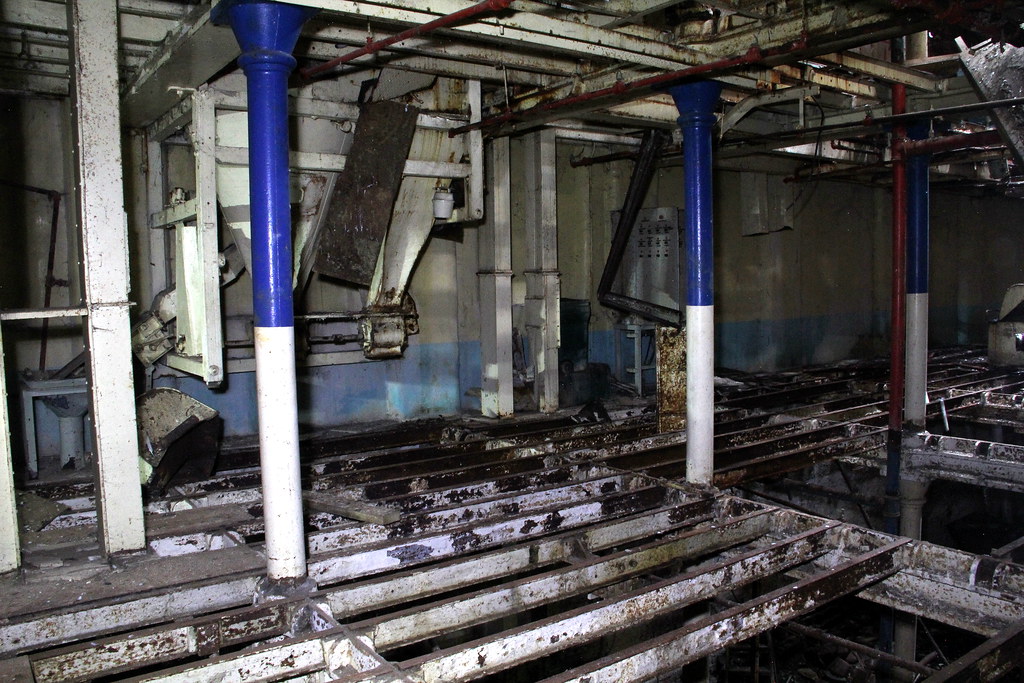 img8526 by HughieDW, on Flickr
img8526 by HughieDW, on Flickr
And finally, right back down to the bottom and the subterranean bit:
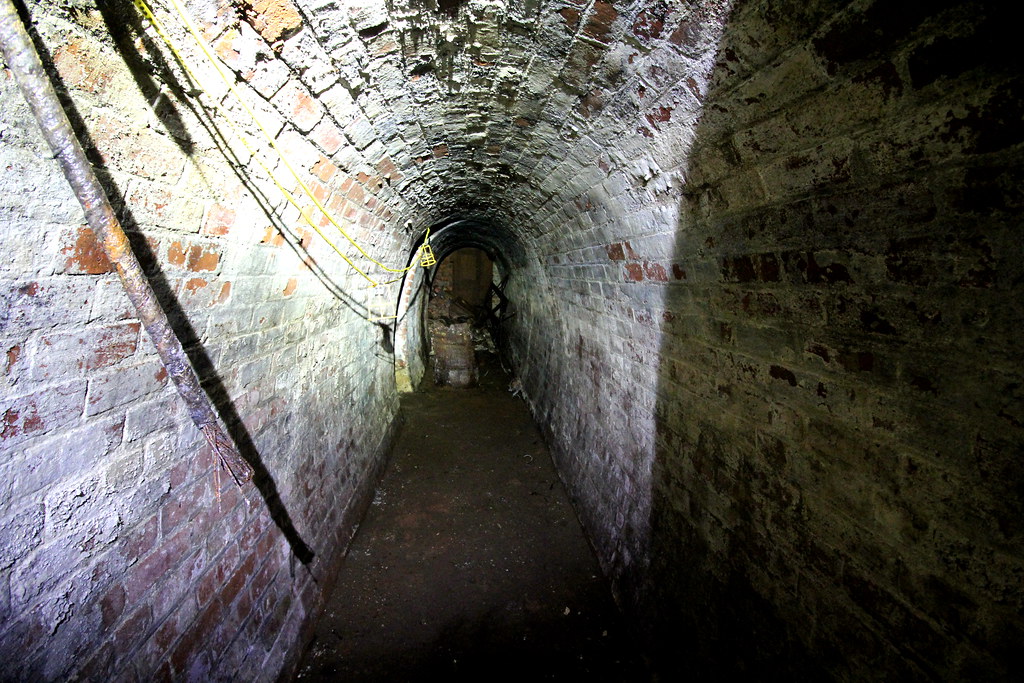 img8551 by HughieDW, on Flickr
img8551 by HughieDW, on Flickr
On the edge of Liverpool’s Baltic Triangle, Heap's Rice Mill was founded by Joseph Heap as Joseph Heap & Sons Ltd in 1778. Initially, just a rice mill, warehouses were added and then combined into a single building. Its claim to fame is that the rice in Kellogg's Rice Krispies was once ground at Heap's. The massive seven-storey mill is predominantly constructed in red-brick, a slate roof and a frame of timber and cast iron.
Until about the 1880s, Heap & Sons owned their own ships which were known as the Diamond H Line. They sailed between Liverpool and Australia, via Rangoon and the East Indies. The firm was operational until 1988 when it transferred to a new site in Regent Road. Heap’s Mill was still partially operational right up until 2005. It was then vacated and left empty and was due to be demolished until it was Grade II listed in 2014. English Heritage stated that the mill was “a good example of an early and mid-C19 warehouse complex adapted in the late-C19 for a single unified use as a rice processing and storage site”.
There were plans afoot in 2014 to convert the building into luxury apartments as part of a £130m residential development. Writing in the Architects' Journal Gill Darley, described the plans as "façadism" as the developers had wanted to pull out of the redevelopment if they were forced to keep the original interior. Hence in 2015 the site was sold on to Inhabit who disclosed that a planning agreement had been reached and that the work to convert the building into luxury apartments was to be started. However, Elliot Lawless' Elliot Group bought it back in July 2019, but no work has yet started.
The mill pictured back in 1980:
 Heap-Mill-1980 by HughieDW, on Flickr
Heap-Mill-1980 by HughieDW, on Flickr2. The Explore
So, after two mornings of relative exploring failure exploring in Liverpool on morning 3, my first target turns out to have live secca on it, so I move onto an alternative place. The place is a complete death trap and my caution slowed me down somewhat. When it came to the “Bridge of Death” I’d reached my comfort zone. It was also really hard to photograph due to the close-to-darkness light situation and sketchy floor. All-in-all though, a very interesting explore, even if my pictures didn’t really do the place justice.
3. The Pictures
A few externals first:
 img8556 by HughieDW, on Flickr
img8556 by HughieDW, on Flickr img8560 by HughieDW, on Flickr
img8560 by HughieDW, on Flickr img8557 by HughieDW, on Flickr
img8557 by HughieDW, on Flickr img8555 by HughieDW, on Flickr
img8555 by HughieDW, on FlickrAnd we’re in:
 Rice Liverpool 01 by HughieDW, on Flickr
Rice Liverpool 01 by HughieDW, on Flickr img8547 by HughieDW, on Flickr
img8547 by HughieDW, on FlickrA pair of two large hoppers between the two buildings:
 img8553 by HughieDW, on Flickr
img8553 by HughieDW, on Flickr Rice Liverpool 02 by HughieDW, on Flickr
Rice Liverpool 02 by HughieDW, on FlickrLooking up at a loading bay, originally outdoors, now indoors:
 Rice Liverpool 04 by HughieDW, on Flickr
Rice Liverpool 04 by HughieDW, on Flickr Rice Liverpool 03 by HughieDW, on Flickr
Rice Liverpool 03 by HughieDW, on Flickr Rice Liverpool 16 by HughieDW, on Flickr
Rice Liverpool 16 by HughieDW, on FlickrOne of the less sketchy floors in B block!
 Rice Liverpool 06 by HughieDW, on Flickr
Rice Liverpool 06 by HughieDW, on Flickr img8499 by HughieDW, on Flickr
img8499 by HughieDW, on FlickrThe circular staircase was at least solid!
 img8541 by HughieDW, on Flickr
img8541 by HughieDW, on Flickr img8537 by HughieDW, on Flickr
img8537 by HughieDW, on FlickrAnd up to the attic on the top level:
 Rice Liverpool 07 by HughieDW, on Flickr
Rice Liverpool 07 by HughieDW, on Flickr Rice Liverpool 08 by HughieDW, on Flickr
Rice Liverpool 08 by HughieDW, on Flickr Rice Liverpool 10 by HughieDW, on Flickr
Rice Liverpool 10 by HughieDW, on Flickr img8517 by HughieDW, on Flickr
img8517 by HughieDW, on Flickr Rice Liverpool 12 by HughieDW, on Flickr
Rice Liverpool 12 by HughieDW, on Flickr Rice Liverpool 15 by HughieDW, on Flickr
Rice Liverpool 15 by HughieDW, on FlickrThe door from C block to B block flanked by two cyclone-type sentries:
 Rice Liverpool 14 by HughieDW, on Flickr
Rice Liverpool 14 by HughieDW, on FlickrConnecting bridge between block B and C:
 img8528 by HughieDW, on Flickr
img8528 by HughieDW, on FlickrA large part of C block has no floors at all!
 Rice Liverpool 17 by HughieDW, on Flickr
Rice Liverpool 17 by HughieDW, on Flickr Rice Liverpool 19 by HughieDW, on Flickr
Rice Liverpool 19 by HughieDW, on Flickr img8532 by HughieDW, on Flickr
img8532 by HughieDW, on Flickr img8527 by HughieDW, on Flickr
img8527 by HughieDW, on Flickr img8526 by HughieDW, on Flickr
img8526 by HughieDW, on FlickrAnd finally, right back down to the bottom and the subterranean bit:
 img8551 by HughieDW, on Flickr
img8551 by HughieDW, on Flickr


